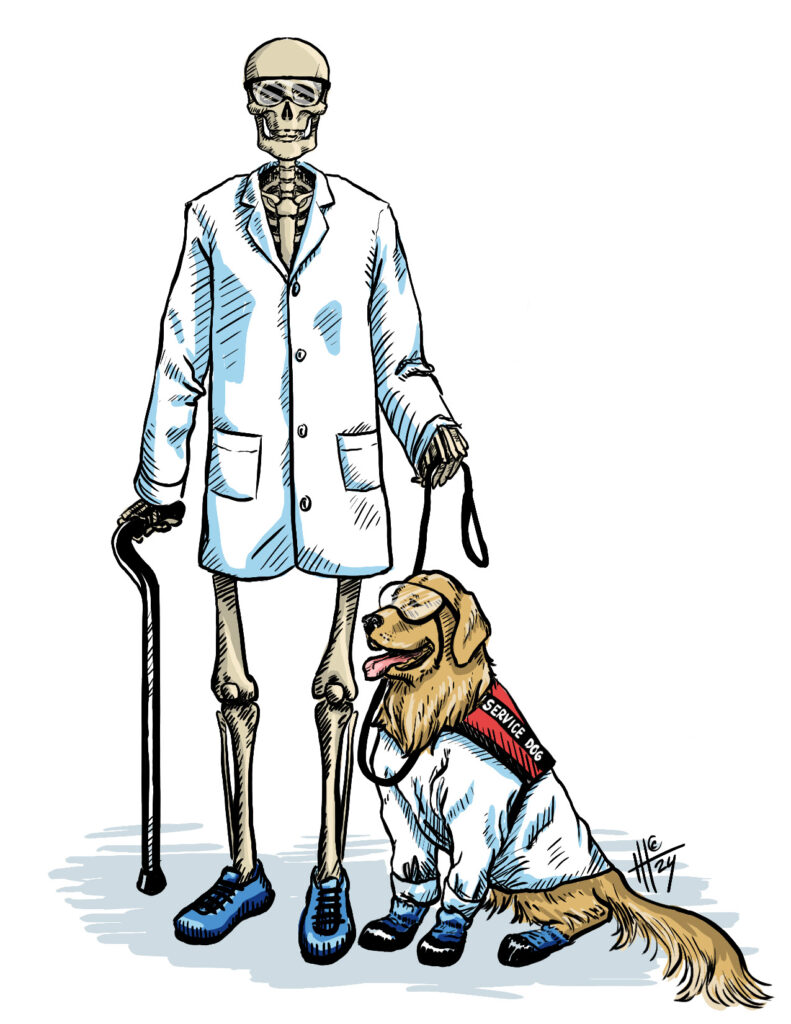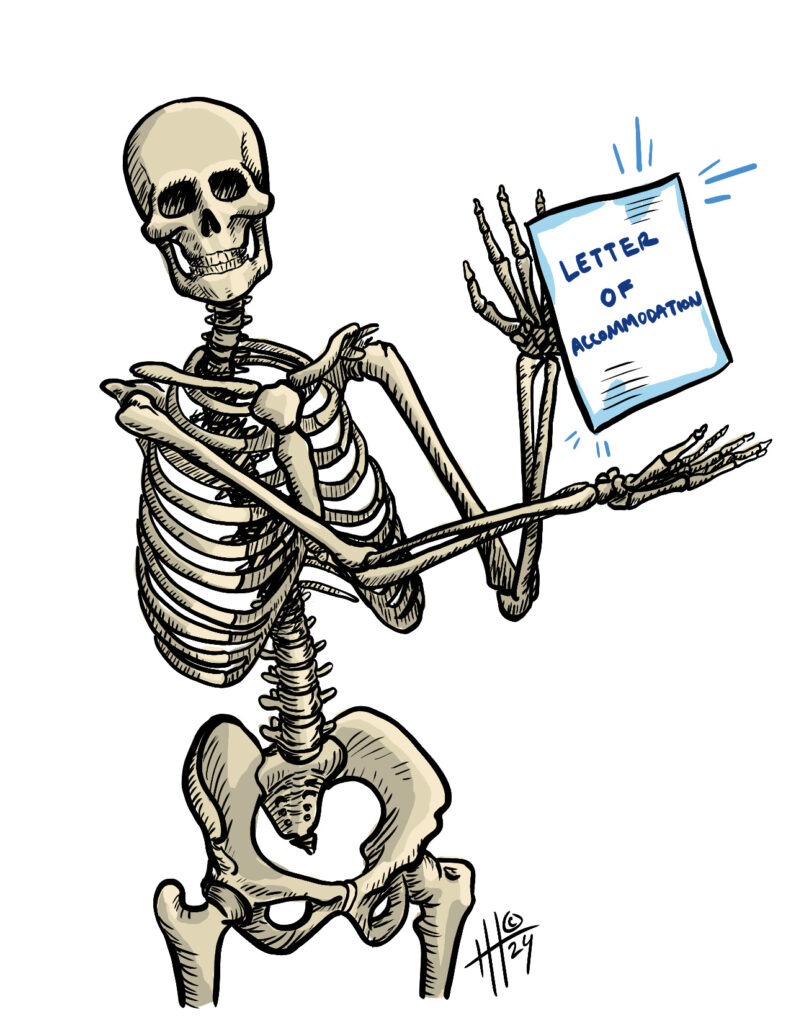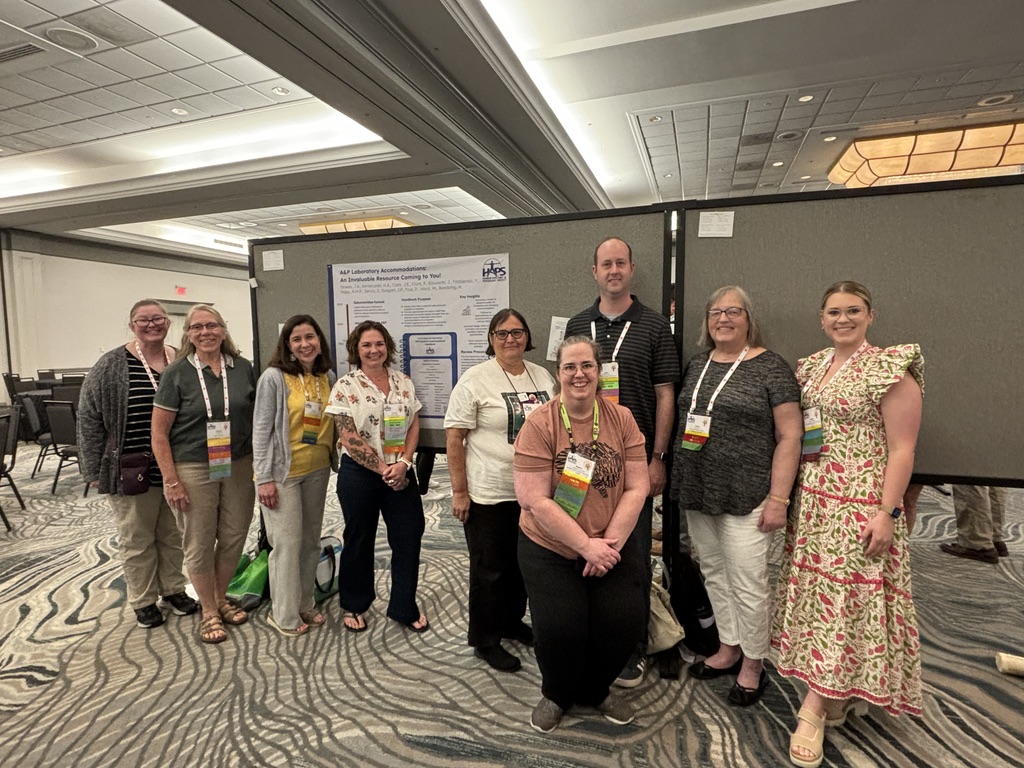
Ensuring all students have equitable moments for learning is at the forefront of our HAPS goal of promoting excellence in the teaching of human anatomy and physiology. Providing students extra time on lecture exams may require relatively minimal effort, while laboratory accommodations may create “head-scratcher” moments for instructors. Lab safety considerations, efficient use of lab time, and restricted flexibility in the physical lab room present complications that may not be encountered in the lecture classroom. If you are struggling to generate ideas for how to accommodate or adapt your learning environment to promote student success for everyone, regardless of limitations or abilities, we have a resource for you!
The HAPS Curriculum & Instruction (C&I) committee has developed a handbook full of useful ideas and suggestions that support all students’ success in A&P lab courses.
In the handbook, the C&I committee has compiled a list of possible A&P lab accommodations for students facing potential barriers to success. Educational hurdles such as temporary medical conditions like healing from a broken bone, or spelling and/or visual accommodations, or presence of a service animal in the lab, among many more, are reviewed in the handbook.

Here are suggested steps for gaining the best initial user experience with the handbook:
- Receive a letter from your campus’ office of accommodation specifying the accommodation(s) needed
- Review accommodation(s) to determine its feasibility
- Initiate a conversation about accommodation efforts with the student emphasizing clear communication
- Search the handbook for suggestions for appropriate accommodations for particular student needs in lab spaces
The provided suggestions for meeting those accommodations should be treated as a starting point for creative thinking about solutions, curriculum planning, and conversations with your campus’ Office of Accessibility.
Even if you haven’t personally encountered a particular accommodation mentioned in the handbook, exploring its contents can still be enlightening. The suggestions are embedded with inclusive teaching ideas that can challenge and expand your current assumptions about teaching in a laboratory setting. Having clear goals along with equitable instruction may foster higher education instructors to adapt and think about accessible learning for all our students.
This handbook will be featured soon on the A&P Professor Podcast, hosted by our very own HAPS member Kevin Patton! This podcast will include more details about the handbook and examples of how to use it. Be on the lookout for that!
To access the handbook, members can visit the HAPS website, and visit the teaching resource hub, then select “A&P Lab Resources”. The Accommodations Handbook is found at the bottom of the page and requires a member login to access. If you are not a HAPS member, consider joining today to gain access to this resource along with many others!
A special thanks to Hannah Hurst (University of Illinois at Chicago, Biomedical Visualization student) who illustrated the fun skully images for this specific HAPS blog post.

